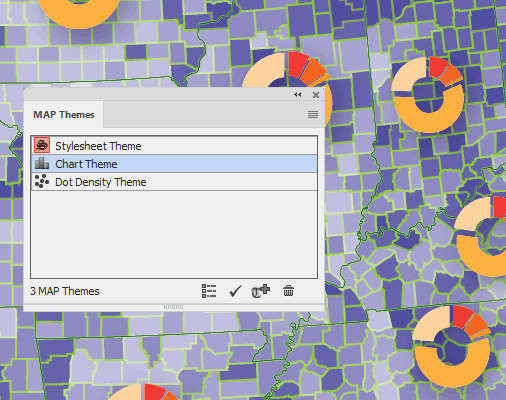

MAPUBLISHER GRATICULE ADD N SOFTWARE
It is hope that the publication of this new formula will help the projection find its place in other cartographic projection libraries and software applications. Development of the equation was made in collaboration with designer of the projection, Tom Patterson. At the same time, the polynomial equation also improves the roundness of the corners, a distinguishing mark of the projection. The proposed equation is easier to program and contains inverse projection. This poster presents alternative polynomial equation for the Natural Earth projection, as a result of my graduation thesis. This barrier prevents projections widespread use and because of that, the only software application where the Natural Earth projection can be computed is Flex Projector, where the projection was designed. But its implementation into geospatial software requires considerable effort. The projection defines the length and spacing of parallels in a tabular form for every five degrees of increased latitude and piece-wise cubic spline interpolation is used to project intermediate values. The Natural Earth projection is a new projection for small-scale world maps. A user study with 448 participants verified that the Compact Miller - together with the Plate Carrée projection - is the most preferred cylindrical compromise projection. Unlike the Miller Cylindrical projection, the Compact Miller projection has a smaller height-to-width ratio and shows the world with less areal distortion at higher latitudes. We highlight the projection with a height-to-width ratio of 0.6:1, which we call the Compact Miller projection because it is inspired by the Miller Cylindrical projection. The presented aspect-adaptive cylindrical projection is well suited for digital maps embedded in web pages with responsive web design, as well as GIS applications where the size of the map canvas is unknown a priori. The resulting equations for converting spherical to Cartesian coordinates require a small number of coefficients and are fast to execute. The visually designed projections were approximated by polynomial expressions that define a cylindrical projection for any height-to-width ratio between 0.3:1 and 1:1.
MAPUBLISHER GRATICULE ADD N SERIES
The projection was constructed using a visual design procedure where a series of graphically optimized projections was defined for a select number of aspect ratios. The goal of designing this projection was to show land masses at central latitudes with a visually balanced appearance similar to how they appear on a globe. This article introduces a new compromise cylindrical map projection that adjusts the distribution of parallels to the aspect ratio of a canvas. Second, many of the commonly used cylindrical compromise projections show areas and shapes at higher latitudes with considerable distortion. First, existing cylindrical map projections have a static height-to-width aspect ratio and do not automatically adjust their aspect ratio in order to optimally use available canvas space. There are two problems with current cylindrical projections for world maps. The inverse procedure uses the Newton-Raphson method and converges in a few iterations. The polynomial coefficients were determined with least square adjustment of indirect observations with additional constraints to preserve the height and width of the graticule. The development of the polynomial equations was inspired by a similar study of the Robinson projection. Distortion values of this new graticule are not significantly different from the original piece-wise projection. The formulas are simple to implement in cartographic software and libraries. The polynomial expression also improves the smoothness of the rounded corners where the meridians meet the horizontal pole lines, a distinguished mark of the Natural Earth projection which suggests to readers that the Earth is spherical in shape.

This graduation thesis introduces alternative polynomial equations that are considerably simpler to compute. In the original definition, piece-wise cubic spline interpolation is used to project intermediate values that do not align with the five-degree grid. It is a true pseudocylindrical projection, and is neither conformal nor equal-area. The original Natural Earth projection defines the length and spacing of parallels in a tabular form for every five degrees of increased latitude. It was designed in Flex Projector, a specialized software application that offers a graphical approach for the creation of new projections. The Natural Earth projection is a new projection for representing the entire Earth on small-scale maps.


 0 kommentar(er)
0 kommentar(er)
